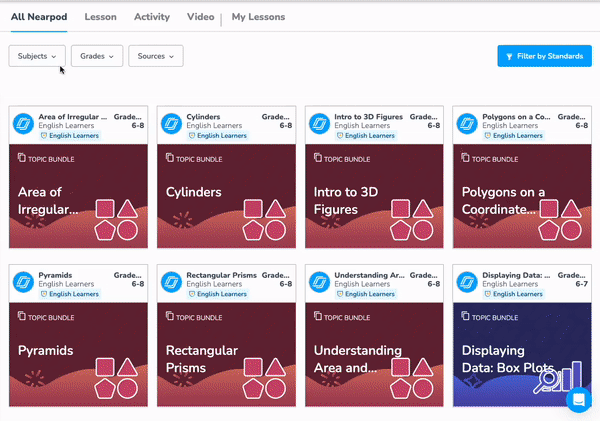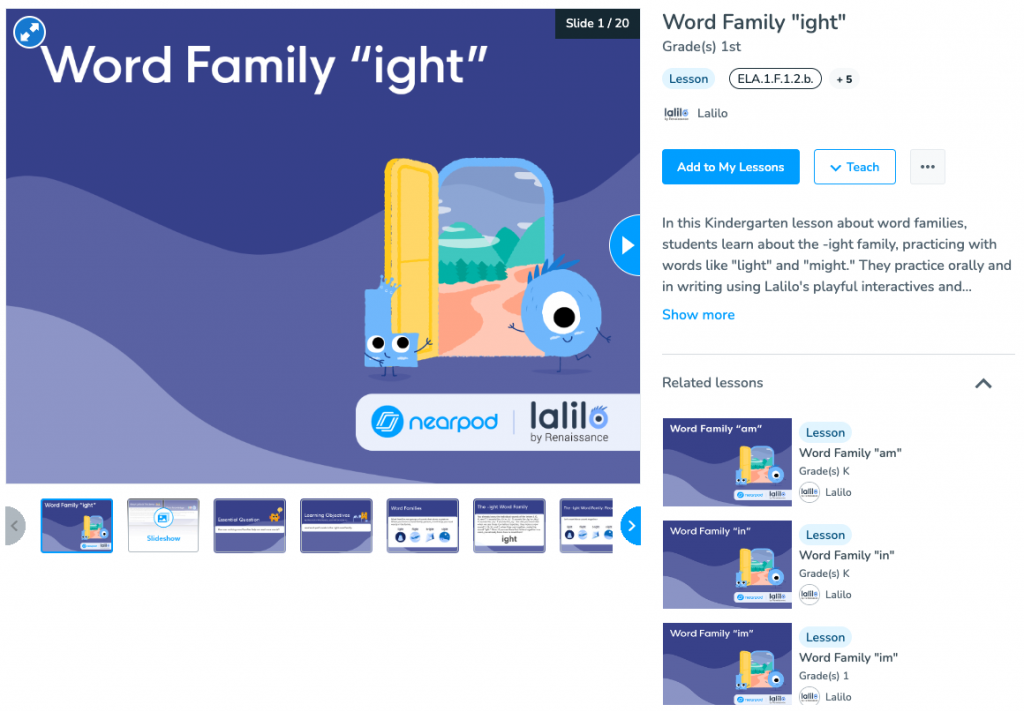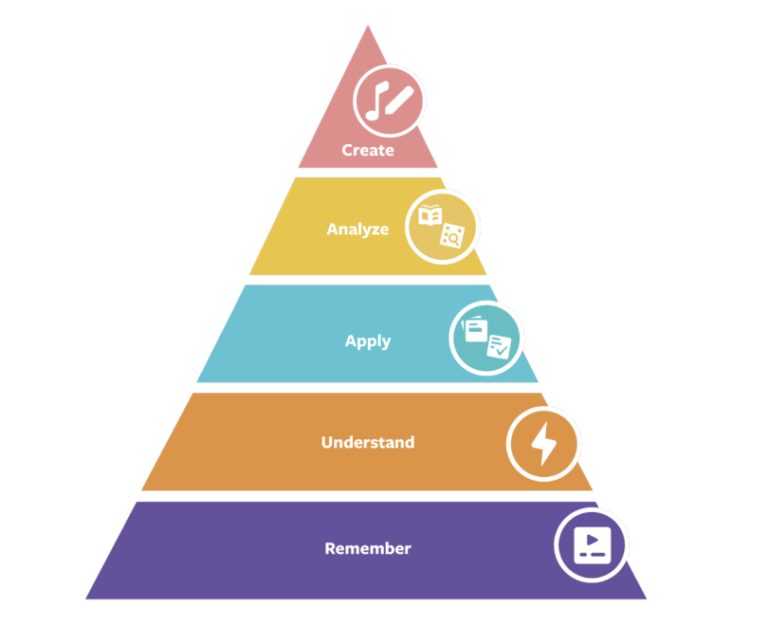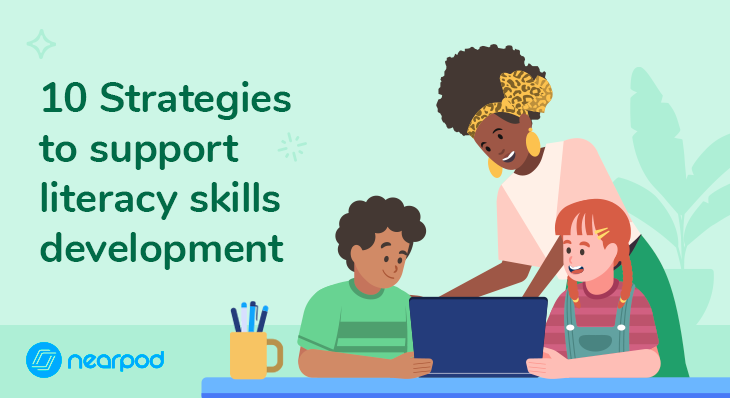
10 Strategies to support literacy skills development
Coming out of the COVID-19 pandemic, schools face the challenges of stakeholders being unprepared to address learning needs systematically that resulted from the sudden shift to remote learning. Not that remote learning doesn’t work, but rather small and large districts alike (and families!) weren’t prepared or resourced to deliver and receive quality programming in a totally new way. Categorically, math and reading test scores plummeted to all-time lows, with grave disparities and learning loss among the most disenfranchised populations of students. Therefore, it’s no surprise that educators have doubled down on sharpening their own skill sets for teaching literacy skills and supporting students’ families to do the same at home. With a renewed focus on the Science of Reading, there are several ways to encourage not only a strong foundation for literacy but a love for reading.
What are literacy skills?
While many equate literacy with reading, developing literacy skills actually encompasses listening, speaking, reading, and writing. The focus on reading comes from the fact that while human brains are wired to speak, they are not wired to read and write. Reading development is not a natural process, and therefore kids do not learn to read as they learn to talk. A 1998 article from ASCD refers to the reading process as “linguistic gymnastics,” highlighting how unnatural the pursuit is and why it requires rigorous instruction. Hence, the shift towards the teaching of reading relies on the decades of research behind the Science of Reading.
Why is early literacy important?
Establishing language and literacy early is key in setting children up for success in school and in life. Early literacy skills help establish positive learning experiences that encourage lifelong learning overall. Many refer to reading as a “gateway” to future success. According to Reading Rockets, key predictors in preschool for reading and school success are:
- Oral language: listening comprehension, oral language vocabulary
- Alphabetic Code: alphabet knowledge, phonological/ phonemic awareness (the ability to discriminate sounds in words), invented spelling
- Print Knowledge/Concepts: environmental print, concepts about print
Such skill sets can strengthen self-expression, interpersonal communication and relationships, reading comprehension, and a readiness to learn.
10 Strategies to support literacy skills development
To help develop strong readers, educators should focus on the following literacy strategies and skills through the help of Nearpod.
New to Nearpod? Sign up for free below to access these resources, interactive activities, and engaging lessons.
1. Focus on the fundamentals
The Science of Reading (SoR) is not a program but rather a rigorous approach to reading based on decades of research rooted in decoding skills and language comprehension. There are 10 components to the Science of Reading:
- Print concepts
- Phonological awareness
- Phonemic awareness
- Phonics
- Spelling
- Fluency
- Vocabulary
- Oral language skills
- Reading comprehension skills
- Background knowledge
When it comes to the Science of Reading, shore up your own knowledge base and seek out quality resources so that you can help lay a foundation for reading success.
Nearpod allows you to filter by standards to find lessons aligned with the Science of Reading. Choose one of the English Language Arts (ELA) strands in the dropdown menu to discover lessons you can teach or duplicate and modify to meet your students’ needs.
2. Revisit and refresh decoding skills
When it comes to emergent and beginner readers, educators must focus on the intricate construct of fluency, phonemic awareness, vocabulary, phonics, and comprehension. Helping students be able to decode is a fundamental problem-solving skill when it comes to encountering unfamiliar words in the text. English, in particular, is a complex language with many rules it then breaks. Equipping your students with decoding skills and giving them many instances of practice throughout the years is foundational to their academic success and developing literacy skills.
Discover many related Nearpod lessons from Lalilo, such as word families, vowel sounds and patterns, and contractions. Students practice orally and in writing using Lalilo’s playful interactives and Nearpod activities.
Additionally, with the Immersive Reader integration, students can access text-to-speech, read-aloud, translation, picture dictionaries, syllabication features, and more for any piece of text on the Nearpod lesson.
3. Emphasize fluency
Fluency is a key indicator of reading progress. Fluency refers not only to the speed at which one can read (words per minute) but also to the accuracy with which one reads (words read correctly per minute: wcpm). As teachers give oral fluency tests, they also listen for prosody, which is how one reads with expression or intonation. This use of emphasis—pausing, variations, and rhythm—is indicative of a reader’s sense of semantics.
Nearpod can help you record, monitor, and track your students’ fluency progress. Students use the record feature to submit a voice recording of reading a passage on an Open-Ended Question. Watch this quick video to see how:
4. Understand the argument against three-cueing
The Science of Reading leans away from three-cueing— identifying words through meaning (semantic), structure (syntactic), and visual (graphophonic), often referred to as MSV. The new methodology deems this constructivist theory of reading as “guessing” or downplaying phonics and instead argues that students’ eyes need to stay on the text to establish letter-sound knowledge versus skipping to picture cues. While picture cues can aid in understanding meaning or comprehension, they should be secondary to using the networks in our brains to read. Explore the concepts behind the Science of Reading in more depth to better understand this research-based approach to developing decoding skills and language comprehension.
5. Make cross-curricular connections to develop early reading skills
Sometimes, you may hear educators talk about “literacy across the curriculum” or shifting from “learning to read” to “reading to learn.” As children gain early literacy mastery, they need to practice using such newfound knowledge in other subject areas and disciplines. Such cross-curricular connections will allow them to lean in and personalize or individualize their learning pursuits. Some students may be more motivated or engaged in reading about dinosaurs in science or Medieval castles in social studies. They may be captured by the rhythm of poetry or the mind-bending word problems in math.
As mentioned before, Nearpod’s vast library can help you find subject-specific lessons that take a rich, multimedia approach to engage students, whether as a whole group or in a student-directed approach. Also, Immersive Reader permits students to take ownership of their learning since they can use the tool in any lesson as needed.
6. Challenge higher-order thinking skills
Refresh your understanding of the revised levels of Bloom’s Taxonomy. Consider ways to challenge students’ higher-order thinking skills when reading by asking questions around key action verbs like compare and contrast, predict, support, defend, critique, investigate, and develop…just to name a few. Such methodologies ensure reading comprehension goes beyond just a baseline understanding or recall of details.
Flocabulary accelerates learning and academic vocabulary through rigorous and authentically engaging instructional experiences. These video-based lessons create emotional connections by harnessing the power of music, as well as visual art, storytelling, humor, drama, and poetry. It builds higher-order thinking with a lesson sequence that moves learners through Bloom’s Taxonomy: lesson Video for Create, Vocab Game for Understand, Break it Down and Read & Respond for Apply, Quiz for Analyze, and Lyric Lab for Create.
7. Challenge higher-order thinking skills
Part of literacy is the ability to write. One way to foster a love of reading is to help children become storytellers in their own right. Find ways to weave creative writing into your language arts block, and don’t let emerging literacy skills hold back students’ imaginations. They can use inventive spelling or even audio tools to encourage their play with language and their understanding of story elements. And definitely host a publishing party where writers can read their stories aloud.
Nearpod’s virtual reality (VR) tool can help inspire creative writers! Students don’t need headsets, just their own devices, or teachers can project the VR experience on their screens. Check out these lessons as models of ways to use VR in language arts:
- Creative Writing Practice: Nature’s Inspiration: In this mini-lesson, students explore Yosemite and Hawaii to find inspiration for writing.
- Creative Writing Practice: Tallest Building: In this lesson, students explore the Burj Khalifa: the tallest building in the world. They use this location as inspiration for their creative writing tasks.
- Creative Writing Practice: The Igloo House: In this lesson, students explore an igloo house in California to spark their imagination and inspire narrative writing.
8. Seek out supplemental tools
With today’s technologies, there are many tools and software available to help you support and/or intervene when teaching a child to read. Adaptive technologies mean that each child can learn at his/her own pace with personalized strategies. Turn to your colleagues for recommendations and share such with students’ families so that the pursuit of reading becomes a whole-school community goal.
Nearpod’s mission is to make teaching easier with the interactive tools, resources, and content teachers need in one place. Teachers have the ability to create slides, embed interactive assessments, get real-time student insight, and access a library of standard-aligned resources streamlined into one platform.
9. Play with words
Did you know that April is National Poetry Month? Regardless of the time of year, weave poetry into your classroom to encourage practicing literacy strategies. Poetry not only encourages word play with its rhyming, rhythms, and descriptive verse, but it introduces the subtle, sophisticated nuances of figurative language in an appealing way.
With Nearpod’s Draw It tool, have your students create concrete or shape poems. These visual poems draw out the inner artists in a lyrical way.
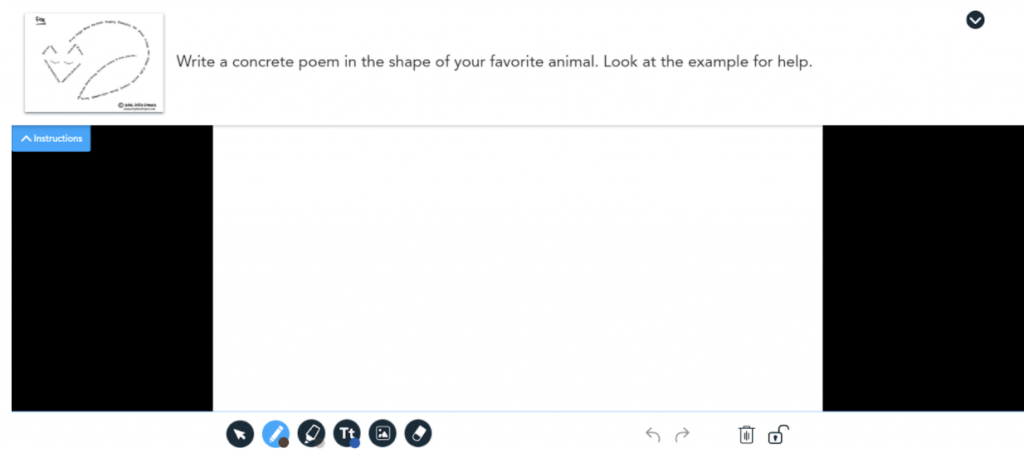
10. D.E.A.R.
Do you remember the concept of Drop Everything and Read (D.E.A.R.) from Beverly Cleary’s Ramona series? Develop a love of reading with your students as early as possible by giving them daily opportunities to immerse themselves in reading deeply. Introduce them to various genres and authors so they can personalize and individualize their own reading journeys. Series are a great way for kids to grow their appreciation of an author’s style, plotline twists and turns, and character development. Explore 27 engaging books we recommend for engaging readers.
Support literacy skills development with Nearpod
These are just 10 strategies to help support developing literacy proficiency— a pursuit that needs to be done early and often with children. Consider the ways you can approach oral language and reading development each and every day in your classroom. What are the tricks and tips that you have found to be effective in your classroom over the years? And then seek out ways to learn from others. Which strategies exemplified by others, would you like to try?
New to Nearpod? Sign up for free below to access these resources, interactive activities, and engaging lessons.

Darri Stephens is a dedicated LX (learning experience) designer, passionate about creating quality content and programs for kids, families, and educators. With MAs in Education from both Harvard and Stanford, and work experience at best-in-class ed tech organizations including Wonder Workshop, Nickelodeon, and Common Sense Education, she is steeped in the design thinking process and committed to agile and iterative project management, which has resulted in multi-award-winning programs and products.


